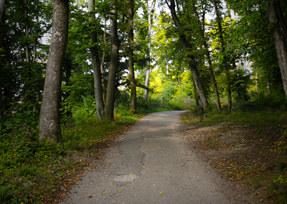Road signs, traffic lights, emergency phones, road lights, toll booths, and billboards consume a lot of energy. A steadily dwindling reserve of fossil fuel is used to produce this energy. Toxic greenhouse gases are emitted into the atmosphere, raising global temperatures, resulting in weather related disasters like storms, floods and droughts. Transporting construction material from their point of origin, construction and demolition debris disposal are of concern when building roads.
Here are some suggestions for building sustainable roads:
Huge mounds of old tires can be recycled and used in road building. Fly ash, a by product of industries running on coal, and used toners from printers and copiers can be used to make environment friendly road ways. Debris from construction sites can be recycled to lay a strong foundation for road paving.
-
As old tires cannot be recycled or remolded into new tires, they can be used as backfill in highway construction. The old tires are compressed into bales to provide reinforcement and safety for highway embankments. Unlike soil these bales come compactly packed in stainless steel or galvanized baling wire, are lighter, more stable and allow for drainage. They are easy to install and reduce costs.
-
Since used or faulty toners used in printers and copiers cannot be recycled, they end up in landfills. Pavements made from recycled toners blended with regular asphalt are better as they do not crack and last longer.
-
In order to keep fly ash, a product of coal burning, from landfills, it can be used to concretize pavements. Such pavements are definitely stronger and more durable as there is a marked reduction in shrinking from drying and the subsequent cracking. A mixture of fly ash and concrete is easier to work with and is better for reinforcing steel. The mixture is not affected by seawater or chemicals, and is cost effective.
-
Recycled construction debris, such as recycled asphalt shingles and recycled concrete aggregate have been used in the foundation for road paving.
Using locally available construction materials for road building rather than transporting them from other localities is one way to build sustainable roads.
Strategically designed street lights with energy efficient bulbs, optimum light distribution with an eye for aesthetics too reduce costs and air pollution. An LED lamp makes lighting systems glow brighter, is energy efficient, and environment friendly. They are ideal for roadways, billboards, highway signages, and digit displays. Solar powered street lights are an eco-friendly option. Independent solar panels mounted on each street light collect the sun’s energy and store it in batteries to illuminate the roads at night.
Using public transport or carpool reduces fuel consumption, traffic congestion, toxic emissions into the atmosphere, as well as wear and tear of the roads.
...Read more
Close










